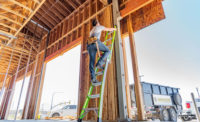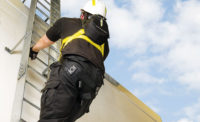If you could prevent 29 worker deaths and 5,842 lost-workday injuries each year1, would you? Of course, you would – as would anyone else, including OSHA.
Those estimates were a major reason OSHA updated 1971’s General Industry CFR 1910 regulations for Walking-Working Surfaces and Personal Fall Protection Systems at the end of 2016.
Citing the leading causes of serious work-related injuries and death as (1) falls from height and (2) falls on the same level, aka “a working surface,” the final rule to update CFR 1910 General Industry Walking-Working Surfaces and Fall Protection Standards was, and is, intended to:
- Better protect workers from falls at height and on working surfaces;
- Provide greater flexibility to employers in choosing fall protection systems; and
- Make compliance easier and less costly.
According to OSHA, the annual monetized benefits of potential lives saved and injuries prevented with CFR 1910 is well over $600 million, but the ultimate outcome is preventing injuries and saving lives.
General industry & construction alignment
It should be noted that CFR 1910 applies only to general industry workplaces (warehouses, utilities, building management, etc.) and to walking-working surfaces (for example, elevated walkways, floors, ladders, ramps, scaffolds, stairs).
OSHA’s issuance of the final rule for CFR 1910 did not and does not affect the construction industry. Here’s why:
Construction has its own rules as outlined in CFR 1926. CFR 1926 already incorporated the technology advances, best practices, and national consensus standards – and now CFR 1910 does, too.
In addition, CFR 1910 also incorporates CFR 1926’s fall protection flexibility. What this means is that general industry can now do what construction’s been doing successfully since 1994: Give employers the flexibility to determine which method of fall protection they deem best for their workplace situation, including personal fall arrest systems (PFAS).
As an aside, OSHA defines PFAS as “a system that arrests/stops a fall before the worker contacts a lower level. Consists of a body harness, anchorage, and connector, and may include a lanyard, deceleration device, lifeline, or a suitable combination.” Employers should enlist competent help to assess their unique workplace situation before selecting any type of worker fall protection, such as PFAS.
Prior to the updates to CFR 1910, general industry fall protection was primarily relegated to keeping work tasks at ground level or putting up a guardrail or other similar barrier between the worker and the potential hazard.
Aligning the general industry CFR 1910 standard with the construction CFR 1926 standard, says OSHA, can help make compliance easier and less costly for employers whose workers perform both general industry and construction activities.
Deadline: November 19, 2018
While most CFR 1910 rules became effective in January, May, and November of 2017, there are some requirements that have an effective date of November 19, 2018 – namely those related to fixed ladders and accepted fall protection systems. (Fixed ladders, for OSHA purposes, are those that are permanently attached to a structure, building, or equipment.)
For CFR 1910’s complete regulatory language, visit OSHA.gov. Here, however, is a synopsis of the changes coming this November:
“Installation of fall protection (personal fall arrest systems, ladder safety systems, cages, wells) on existing fixed ladders (over 24 feet) that do not have any fall protection. Installation of ladder safety or personal fall arrest systems on new fixed ladders (over 24 feet) and replacement ladders/ladder sections.”
Compliance dos and don’ts
Making sense of the new rules combined with a fast-approaching effective date may have safety managers questioning what to do to ensure compliance with CFR 1910. Here are some practical answers:
- DO install a ladder safety system or PFAS for new and existing fixed ladders that extend more than 24 feet.
- DON’T install new cages or wells as a fall arrest system after the November, 2018 deadline. Existing cages or wells should be replaced leading up to November 18, 2036 – that’s when the remaining rule for CFR 1910 takes effect, which will eliminate all cages and wells in favor of ladder safety systems or PFAS. Starting to build all systems now with a ladder safety system or PFAS now makes logical sense from a protective standpoint as well as help employers meet the fast-approaching requirement.
- DO install a ladder safety system or PFAS on any replaced section of an existing fixed ladder, cage, or well to maintain legal compliance. Better, get ahead of the 2036 deadline and replace them now with new ladder safety systems or PFAS.
Naturally, changes to regulations require changes to the way safety managers think about worker safety, PPE, and training. Although the total impact of CFR 1910 remains to be seen, the changes are promising: potential improvements in worker protection, a rule that’s easier for both employers and workers to understand and follow, and compliance flexibility for employers thanks to increased fall protection options.
Source
- United States Department of Labor, Occupational Safety & Health Administration, https://www.osha.gov/walking-working-surfaces/



